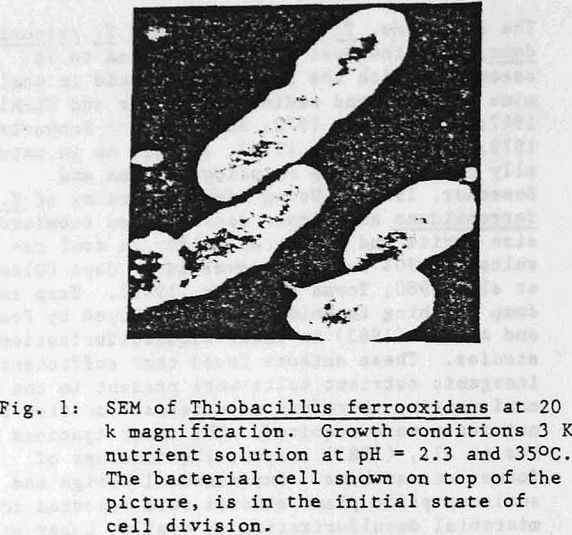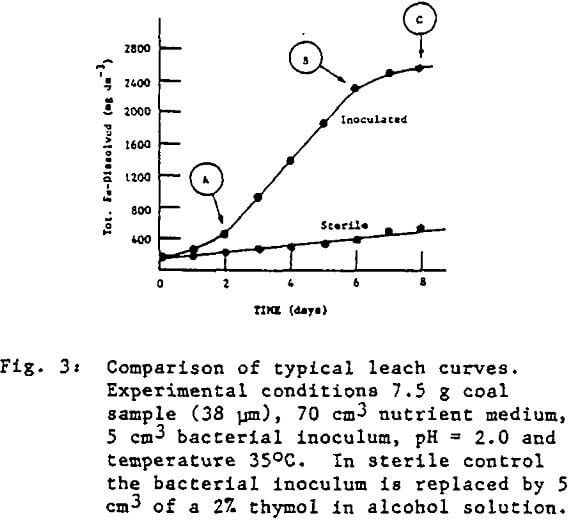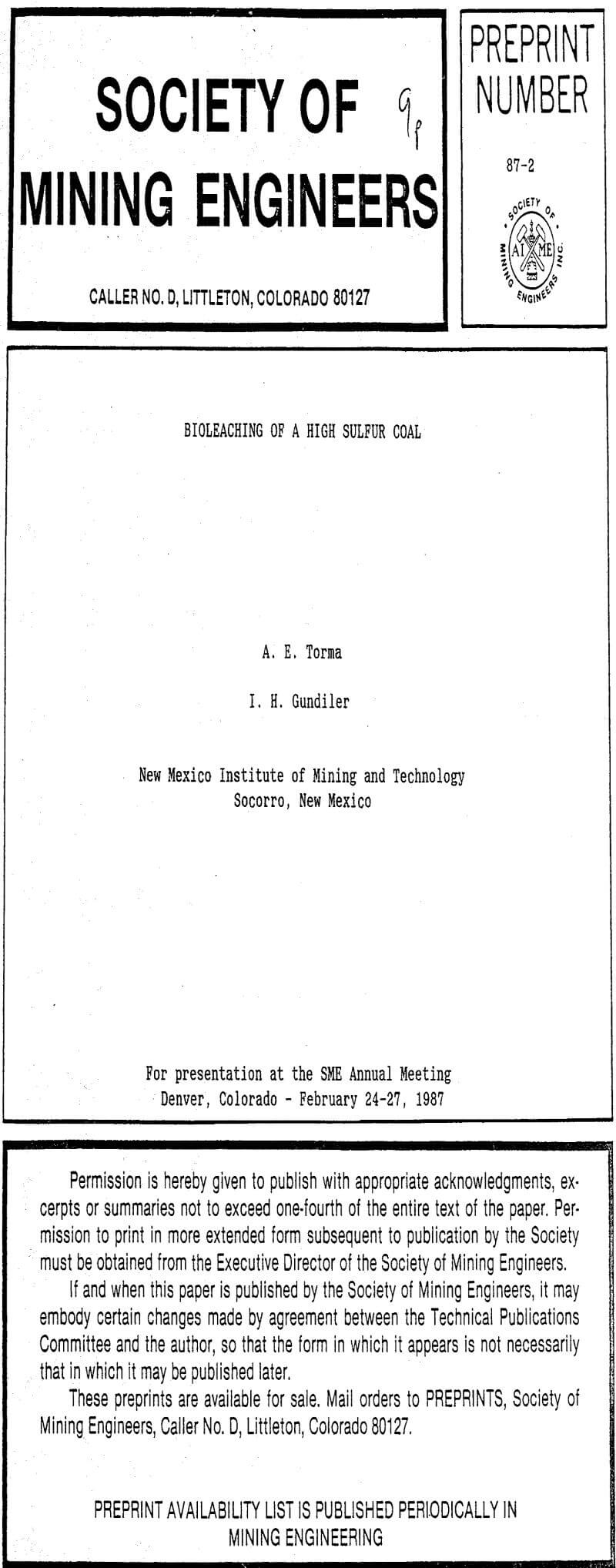Table of Contents
A new approach is emerging that deals with desulfurization of coals by bio-mediated reactions. Desulfurization of coal involves oxidation of pyrite and elemental sulfur inclusions by the bacteria

The organisms, ferrooxidans and thiooxidans, were the most frequently cited to be associated with the formation of acid in coal mine drainage and sediments as well as in naturally occurring dump solutions. Using adapted strains of T. ferrooxidans and finely disseminated submicron size pyrite and elemental sulfur in coal resulted in 90% sulfur removal in 10 days. Heap and dump leaching techniques were employed in their biodesulfurization studies. These authors found that sufficient inorganic nutrient salts were present in the coal matrix, therefore no external addition of nutrients were required. The investigations support the findings of former researchers.

Experimental design and scale-up pilot plant studies were reported for microbial desulfurization of coal by Huber. They found that the best leaching conditions were met in a continuous mixed flow combined with a plug flow reactor arrangement. The residence time in the reactor was found to be 20 hours. Pilot plant approach has been proposed for the treatment of pulverized high-sulfur content coals (Dugan, 1984) using an aerated mixing tank reactor in connection with a settling tank. From the settling tank the aerated leach tank is continuously reinoculated. The desulfurized coal is dewatered by gravity flow. The potential advantage of the method was suggested to increase with increasing sulfur content in the coal, further advantage was mentioned to be the coremoval of the ash content of coal. Some commented on coal desulfurization by thermophilic microorganisms. These authors also suggested a flowsheet for possible industrial application of this method.
The aims of this present study are to provide kinetic information on the microbial removal of sulfur from a high-sulfur content New Mexico coal and on the possible reaction mechanism.
Bacteria
A culture of ferrooxidans originally isolated from chalcopyrite mine drainage water was routinely maintained in our laboratories on 9K nutrient medium of Silverman and Lundgren. Scanning electron microscopic characterization of bacteria is shown in Fig. 1.
For coal desulfurization studies the energy source, FeSO4, in the 9K medium was replaced by the pyritic coal. When growth reached late logarithmic phase, an aliquot of the leach suspension was transferred into a new medium to maintain the stock culture of bacteria or this was used as an experimental inoculum.

Substrate
Hand picked samples of high-sulfur coal were collected. The samples were ground to particle size less than 37 µm and homogenized by coning and quartering four times, then analyzed for total sulfur content which was 3.43%. The total sulfur content is composed of 2.80% inorganic and 0.63% organic sulfur. The total iron of the homogenized sample was 15.03%. Mineralogical analysis of the coal sample showed the presence of pyrite, elemental sulfur, calcium sulfate, silica and various iron oxides and sulfates. Typical pyrite inclusions in the coal sample are shown in Fig. 2.
Results and Discussion
Typical leach curves are shown in Fig. 3. The efficiency of bacterial activity is evident from the comparison of inoculated and sterile control leach curves. In this study, the rate of extraction is computed from the experimental data situated on the A – B (straight line) section of the curve and the final extraction from the point C concentration.
Throughout these experiments sterile controls were carried out but, as the typical leach curves indicate the sterile runs resulted about 5 to 12 times less iron extractions than the inoculated ones. Therefore, the sterile control data will not be further detailed.
Shake Flask Experiments
All shake experiments were carried out in 250 cm³ Erlenmeyer flask containing varying amounts of coal sample (Particle size less than 37 µm), 70 cm³ nutrient medium and 5 cm³ bacterial inoculum. In sterile controls the bacterial inoculum was replaced by 5 cm³ of a 2% thymol in alcohol solution. To monitor the iron removal from coal, one cm³ samples were taken from swirling flasks periodically to analyze total iron leached. The leaching of pyrite gives rise to insoluble reaction products and in this study the samples removed from leach suspensions were treated with one cm³ of 5N HCl for 30 minutes at room temperature then analyzed on an atomic absorption spectrophotometer.
Efficiency of T. ferrooxidans in the desulfurization of a high-sulfur content New Mexico coal has been demonstrated. A special effort has been devoted to the assessment of the kinetic and optimum values of the leach parameters using phenomenological and statistical computation techniques. A generalized mathematical expression has been derived that is able to predict final yields for the iron removal from coal within the range of experimental process variables studied. The mechanism of biodesulfurization of coal proposed to involve the formation of an intermediate activated complex whose thermodynamic data have been calculated. The larger scale experiments are in good agreement with the findings of other investigators who commented on the industrial applicability of this coal biodesulfurization process.
